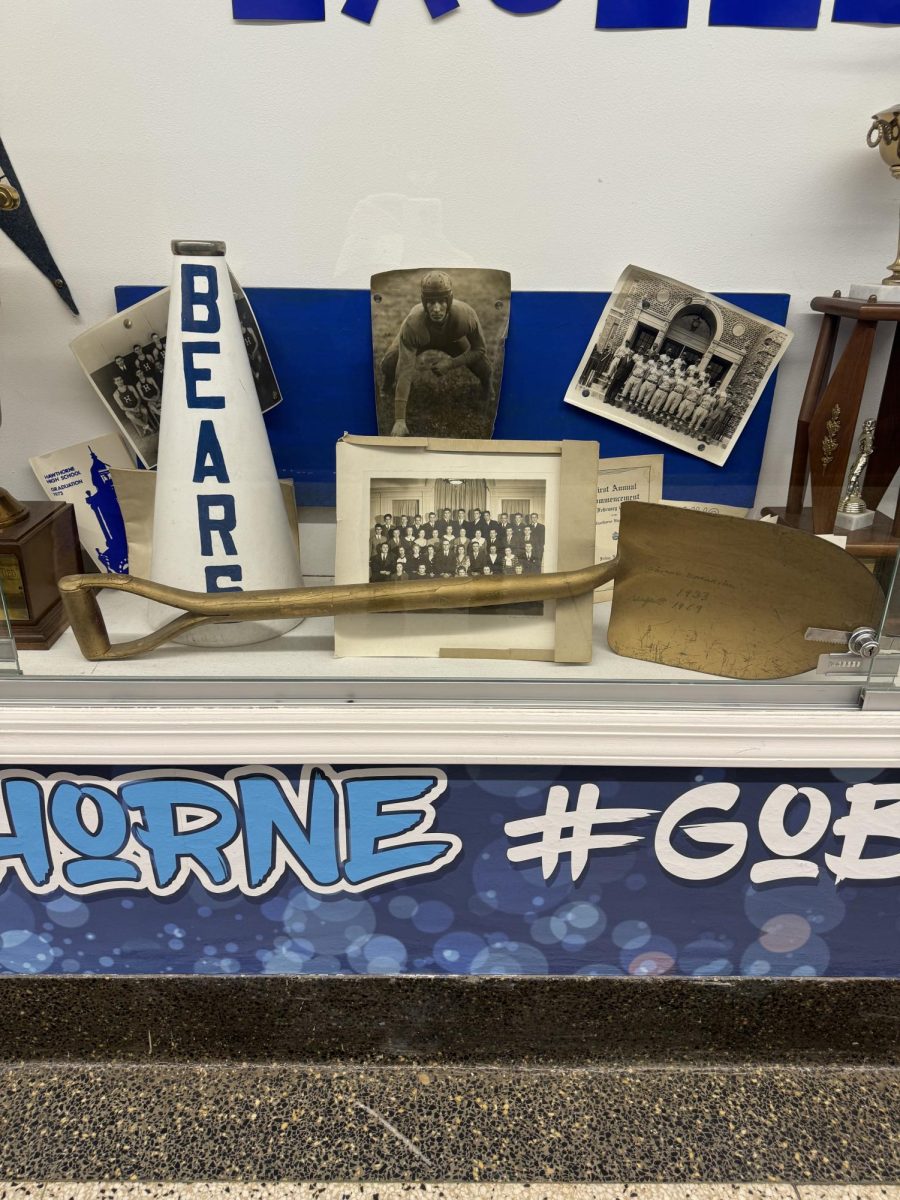Many walk past the display case outside of the main office everyday. But have you ever looked inside? There’s a rather prominent item in that case- the gold shovel. What is it? Why is it there? What are the markings? Why is it gold? What was it used for? With so many questions, it can be hard to find specific answers. Here’s a somewhat complete history of the prophesied gold shovel.
The known history of the shovel is the school’s portion. If you look closely on the blade of the shovel, you can see a few markings. There are some words, followed by “1933” and “1969.” These two dates are very important within our school’s history. 1933 is the year the school first opened, and 1969 is when the “new” addition was added. This “new addition” is the entire left wing of the school, excluding the auditorium (which is original to the school).
You can see where this addition starts as the floor changes on the 2nd level, and on the 1st level you can see a plaque stating the “new” addition from 1970. This plaque is just a few feet away from the shovel. So how does the shovel tie into this wing? For ceremonial purposes, people use a golden shovel to break the first bit of ground as a celebration for the new structure being placed somewhere. This is also why the shovel is most likely hand painted its iconic gold (spray paint didn’t become very popular until 1973).
Why is this so significant? Not only is the shovel a piece of the school and town history, but it may also be a special item from something much bigger than our school.
In World War 2, the famous Jeep had a section of the body by the driver that had 2 indents and straps. These were to hold an axe and, you guessed it, a shovel. These shovels were not gold, but painted army green, or more officially known as OD green. OD stands for Olive Drab, and was designed to fit in with most surroundings. It’s green enough to blend in while going through forests and lush areas, but also brown enough to blend in with dirt. This color was not just used for jeeps, however. It was used on helmets, planes, scabbards, etc. We loved the color so much that by the end of the war, we were dyeing our equipment and certain uniforms this color. Before this, they were khaki colored instead from WW1 and the “intermission” between wars.
So why isn’t it certain to be a WWII Jeep shovel? The markings on the neck of the shovel reveal it to be a completely different shovel model than what it actually is. The neck reads, “BALDWINS KNOXALL BRAND,” with a 2 next to it. Baldwins was a manufacturer of other tools as well, like gardening supplies, railroad equipment, subway parts, etc. “Knoxall” is the specific shovel model.
Think about it like Apple products, iPad, iPhone, etc. Same company, but different devices. The 2 signifies what commercial model the shovel is (1, 2, 3, etc.), or in the army’s case, the model type (A, B, I, II, III, etc). What is so confusing? The markings on our shovel specify that the type we should have is a flat edged shovel, but it’s a round headed shovel. How can this be? Manufacturing error? We may never know. Research will continue throughout the year until a definite answer is found.

